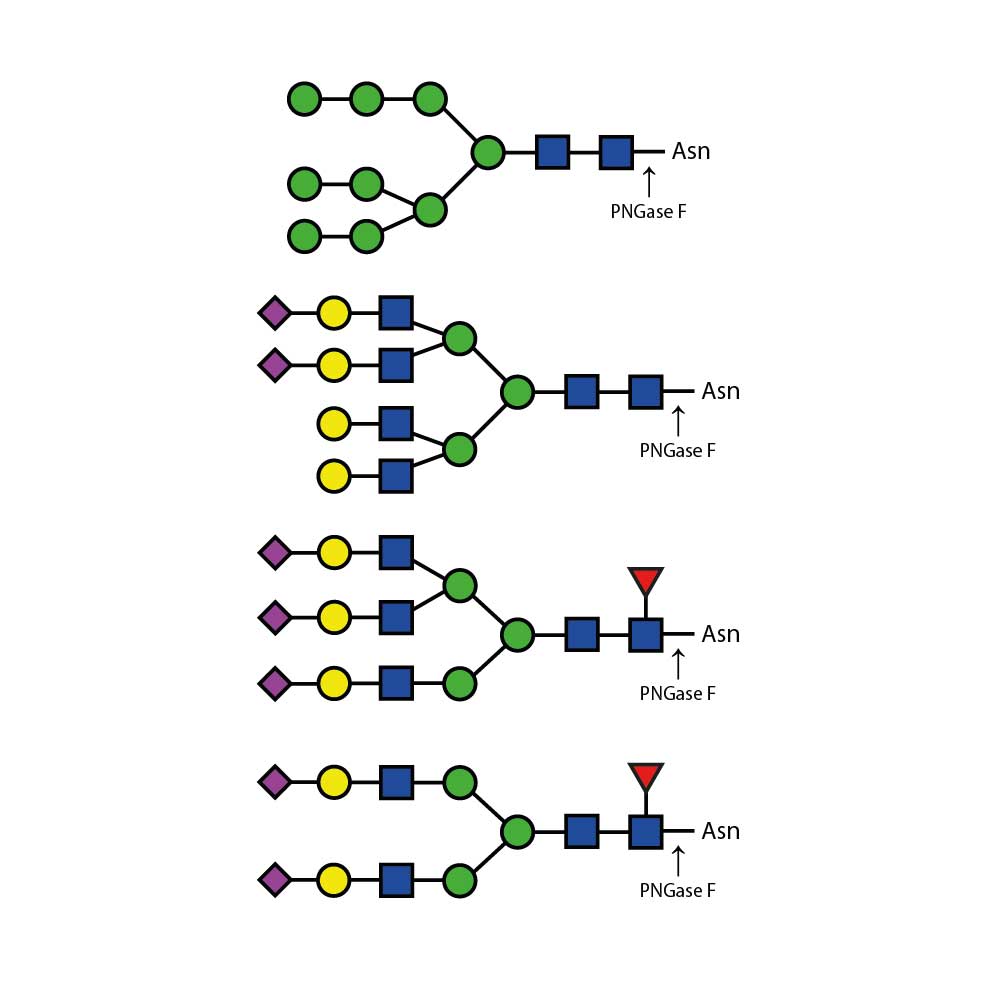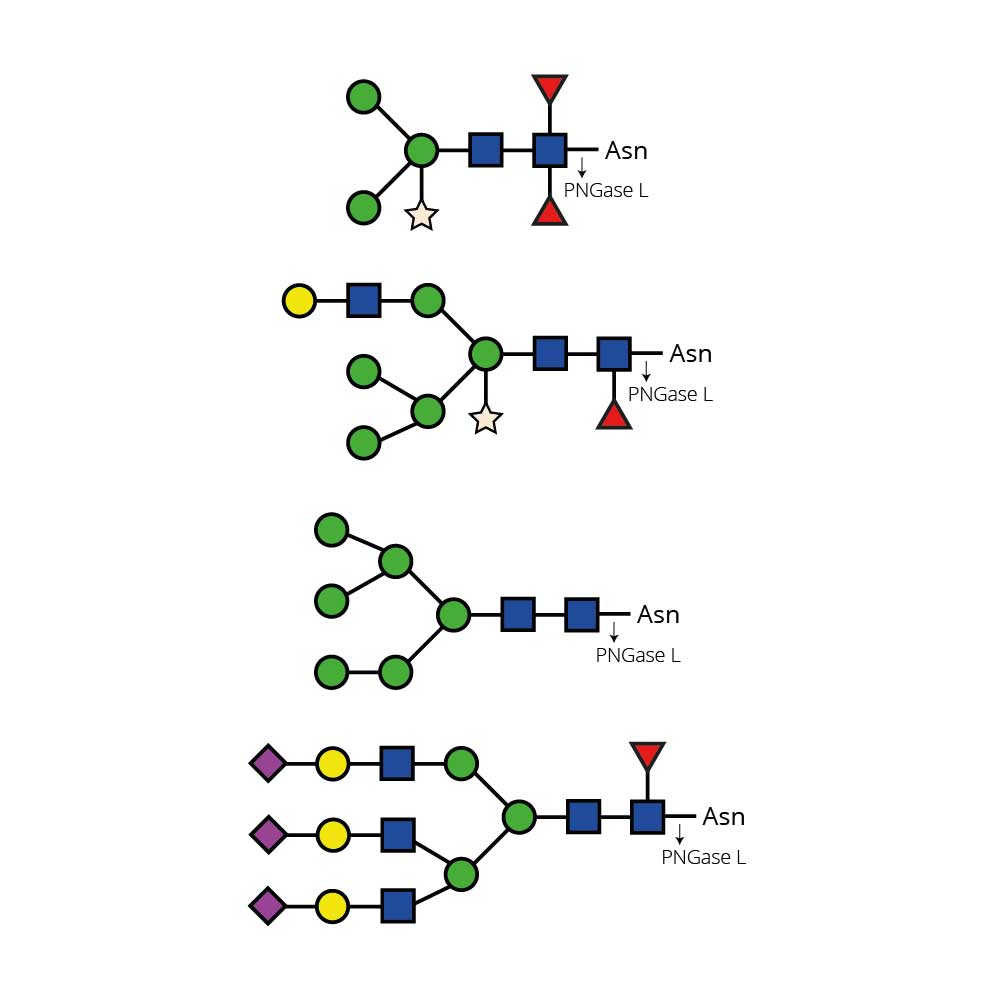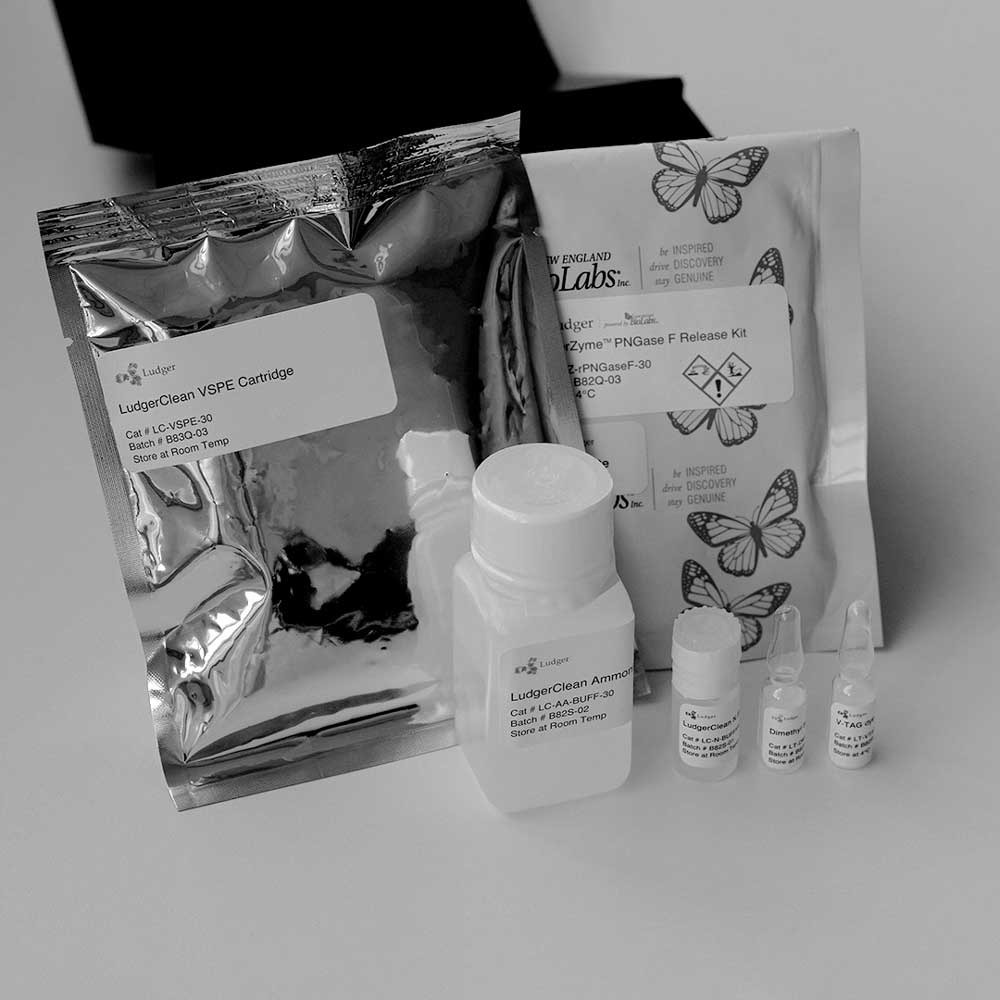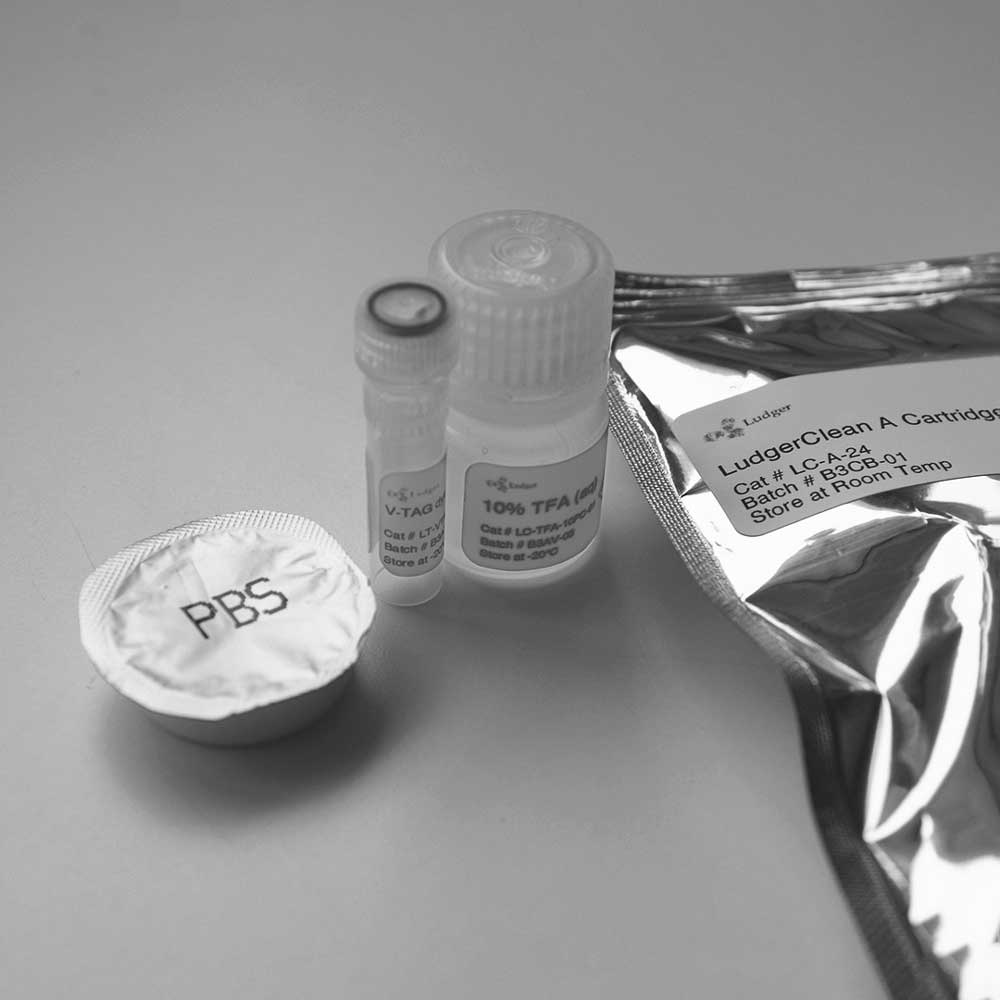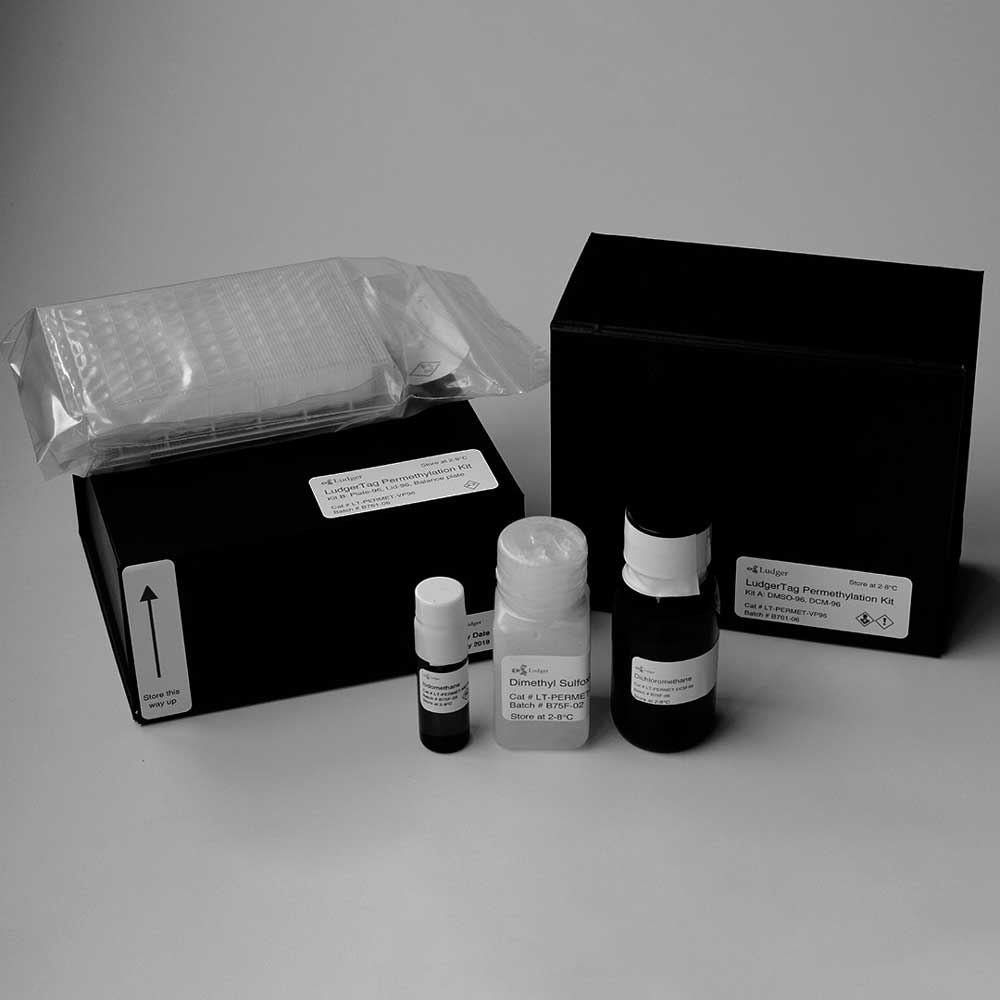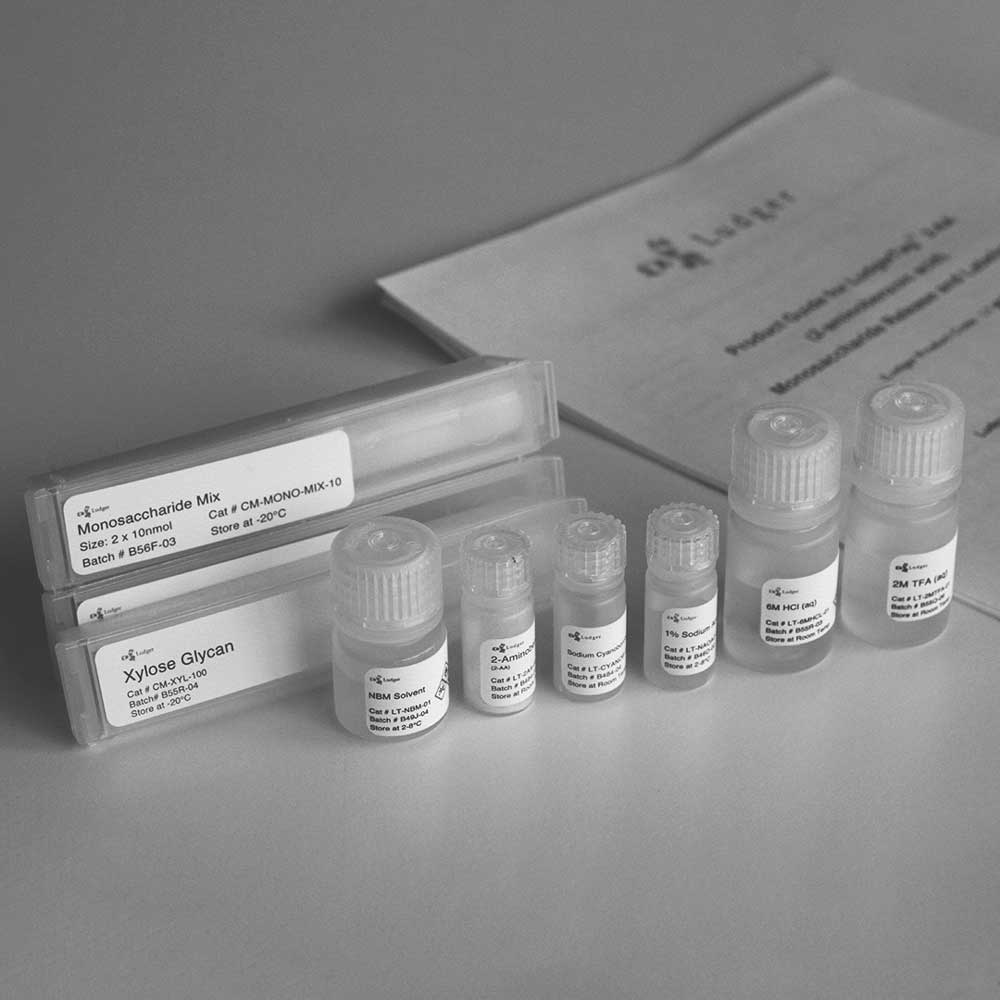
.gif)

-
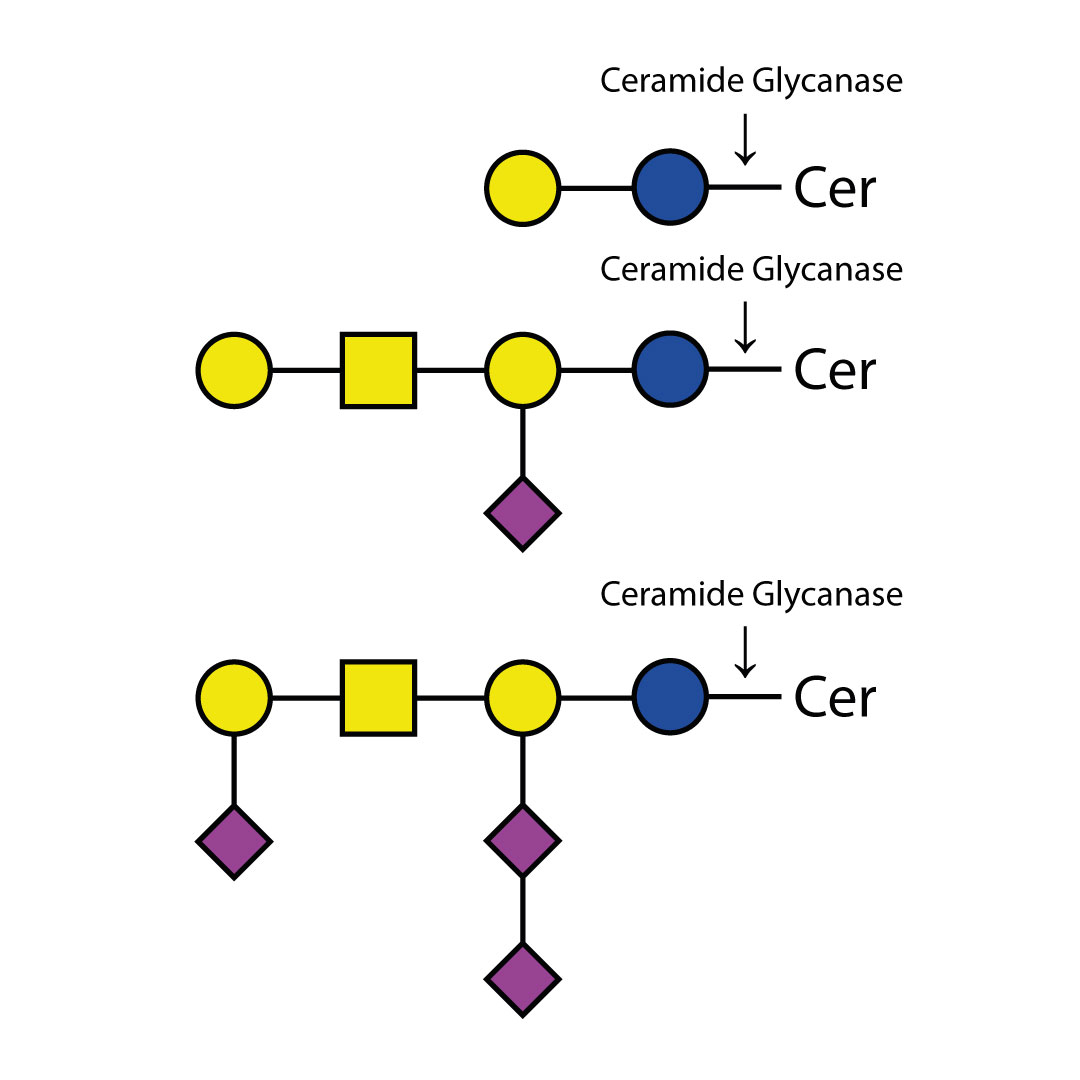

-
2025 Ludger神经酰胺糖苷酶试剂盒 货号: LZ-CER-HM-KIT Ceramide Glycanase Kit;参考价:RMB4588元(具体询价)
神经酰胺糖苷酶可通过切割β - 糖苷键来对多种糖鞘脂进行去糖基化。神经酰胺糖苷酶能够通过切割糖基部分,使糖鞘脂的糖基部分可被Ludger标记(LudgerTag)标记技术检测,从而有助于确定糖鞘脂的糖基化模式。
糖鞘脂(GSLs)是动物中最丰富且种类最多的糖脂类物质(在真菌、植物和无脊椎动物中也存在)。糖鞘脂上的糖基在生理和病理过程中起着重要作用。能够识别和测定糖鞘脂对于发育神经生物学研究以及诸如泰 - 萨克斯病(Tay - Sachs)和戈谢病(Gaucher’s disease)等溶酶体贮积症的研究非常重要。此外,人们对糖鞘脂作为免疫疗法潜在靶点也日益关注。
神经酰胺糖苷酶是一种用于从糖鞘脂释放糖基以便对其进行表征的酶。它通过切割β - 糖苷键来切割包括GM1、GM2和GM3在内的糖基。然后可以使用Ludger标记标记技术对这些糖基进行标记。我们从医蛭(Hirudo medicinalis)中纯化了神经酰胺糖苷酶,并将其与缓冲液和GM1糖脂底物一起以试剂盒形式提供。
该试剂盒包含酶、反应缓冲液和GM1标准品。足够用于多达150次反应 。
-
0.000.00
-
神经酰胺糖苷酶可通过切割β - 糖苷键来对多种糖鞘脂进行去糖基化。神经酰胺糖苷酶能够通过切割糖基部分,使糖鞘脂的糖基部分可被Ludger标记(LudgerTag)标记技术检测,从而有助于确定糖鞘脂的糖基化模式。
糖鞘脂(GSLs)是动物中最丰富且种类最多的糖脂类物质(在真菌、植物和无脊椎动物中也存在)。糖鞘脂上的糖基在生理和病理过程中起着重要作用。能够识别和测定糖鞘脂对于发育神经生物学研究以及诸如泰 - 萨克斯病(Tay - Sachs)和戈谢病(Gaucher’s disease)等溶酶体贮积症的研究非常重要。此外,人们对糖鞘脂作为免疫疗法潜在靶点也日益关注。
神经酰胺糖苷酶是一种用于从糖鞘脂释放糖基以便对其进行表征的酶。它通过切割β - 糖苷键来切割包括GM1、GM2和GM3在内的糖基。然后可以使用Ludger标记标记技术对这些糖基进行标记。我们从医蛭(Hirudo medicinalis)中纯化了神经酰胺糖苷酶,并将其与缓冲液和GM1糖脂底物一起以试剂盒形式提供。
该试剂盒包含酶、反应缓冲液和GM1标准品。足够用于多达150次反应 。
产品说明书链接:
https://www.ludger.com/docs/products/lz/lz-cer-hm/ludger-lz-cer-hm-kit-guide.pdf
产品规格:
神经酰胺糖苷酶是一种用于从糖鞘脂(GSLs)释放糖基从而实现对糖鞘脂进行表征的酶。它通过切割β - 糖苷键来切割包括GM1、GM2和GM3在内的糖基,之后可使用Ludger标记(LudgerTag)标记技术对这些糖基进行标记。
产品描述:EC 3.2.1.123 寡糖基葡糖基神经酰胺糖苷水解酶。
糖苷水解酶家族:GH5
其他名称:神经酰胺酶、神经酰胺糖苷酶、内糖苷神经酰胺酶。
应用:神经酰胺糖苷酶可通过切割β - 糖苷键对多种糖鞘脂进行去糖基化。
比活性:定义为在37°C、0.05M醋酸钠(NaOAc)、1mg/ml 三硝基二苯乙烯(TDC)、5mg/ml 牛血清白蛋白(BSA)、pH值为5.0的条件下,每分钟从神经节苷脂GM1水解1.0 nmol糖基所需的酶量。切割情况通过高效液相色谱法(HPLC)进行监测。
切割:神经酰胺糖苷酶可切割如GM1等鞘脂 。
图2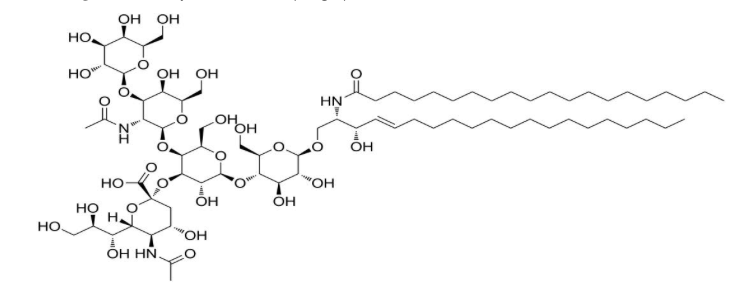
特异性:
神经酰胺酶可切割多种底物的糖基,具体如下:
- 对GM2、GM3、GD3、GD1a、GD1b的切割效率 > 95%。
- 对GM1、GT1b、CTH、LacCer的切割效率 > 90%。
- 对GlcCer的切割效率为20%。
- 对GA1、GM2(Gc)、GA2的切割情况未确定。
最适pH值:4.5 - 6.5。
含量:通过BCA紫外法测定为7.2mg/mL。
活性:20μU/ml。
在总共20μl的反应体系中,5μl该酶在0.467pmols/min的速度下可水解1nmol的GM1。
质量控制:不含α - N - 乙酰葡糖胺酶、α - 岩藻糖苷酶、β - 半乳糖苷酶、β - 葡糖苷酶、α - 和β - 甘露糖苷酶。
配方:该酶保存于经无菌过滤的溶液中,溶液含有0.05M醋酸钠(NaOAc)、1mg/ml牛磺脱氧胆酸钠、5mg/ml牛血清白蛋白(BSA),pH值为5.0。
建议使用方法:
1. 吸取5 µL的LZ - CER - BUFFX4到一支Eppendorf管中,接着加入5 µL约含1nmol待测糖脂样品。
2. 对于阳性对照反应,在一支Eppendorf管中向5 µL的LZ - CER - BUFFX4中加入5 µL的GLIP - GM1 - 01底物。
3. 向反应混合物中加入2 µL的LZ - CER - HM - 10(该酶),用手指轻敲Eppendorf管轻轻混匀。用水将反应体系补足至20 µL。
4. 将样品置于水浴、烘箱或其他恒温加热源中,在37°C下孵育24小时。
此时样品已准备好进行普鲁卡因酰胺、2 - AB或2 - AA标记,并随后通过高效液相色谱(HPLC)进行分析。
此时样品也可冷冻保存。
来源:医蛭(Hirudo medicinalis)
分子量:Mw = 未指定 。
试剂盒包含:
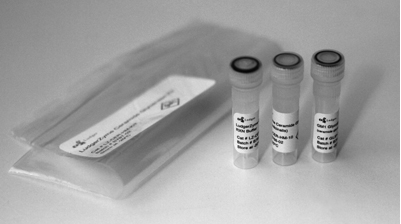
Ludger神经酰胺糖苷酶 - 1瓶,55 μL/瓶。
反应缓冲液(4倍浓缩液) - 1瓶,150 μL/瓶。
GM1糖脂 - 1瓶,10 μL(约2 nmol)。
样品数量:足够用于多达25个样品。
样品用量:最多1 nmol糖脂。
适用样品:含有神经酰胺骨架的分离糖脂。
储存:
长期储存 - 在 - 20°C下储存,至少稳定1年。
避免热源和光照。避免多次冻融循环。
短期储存 - 最长14天,在4°C下储存。
避免热源和光照 。
电话:186 0210 8329
157 1167 5909
cindy.li@ludger.com
QQ:258363672 170439096

Ludger

QQ(Lily): 258363 672 QQ(Cindy): 170 439 096
地 址:上海静安区南京西路1266号



